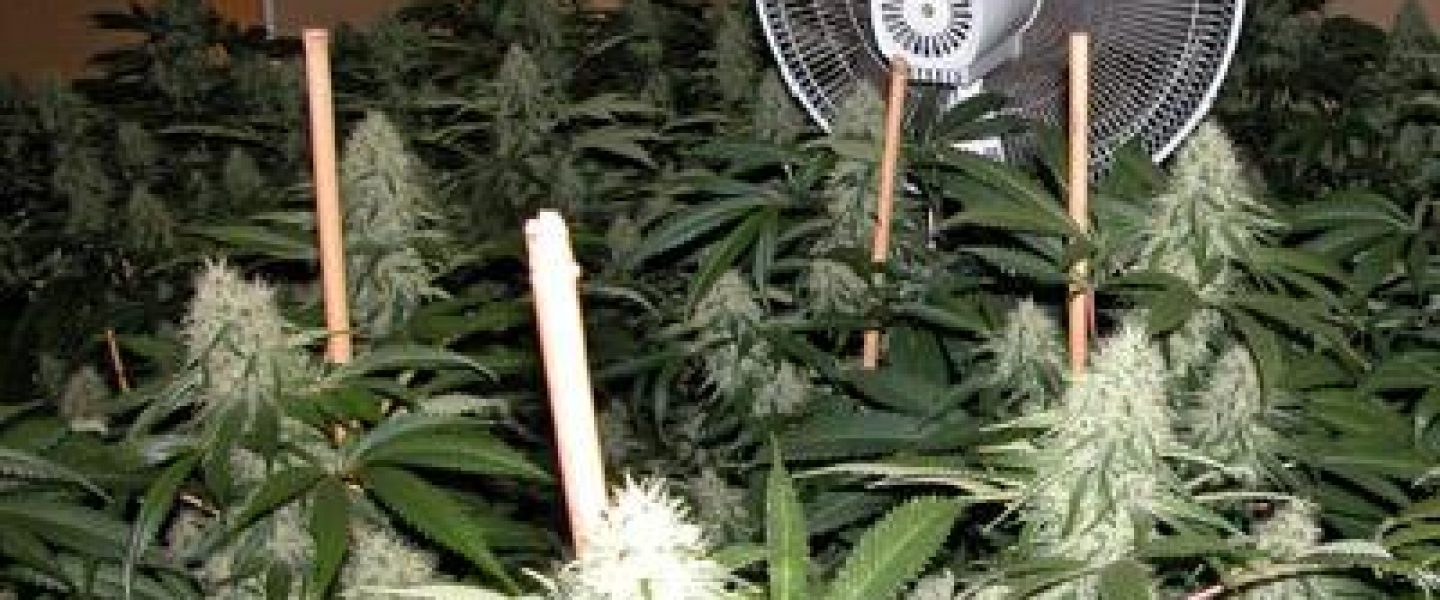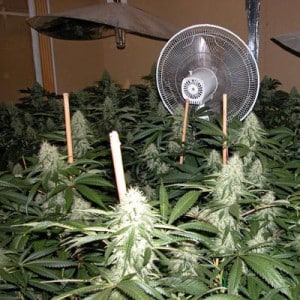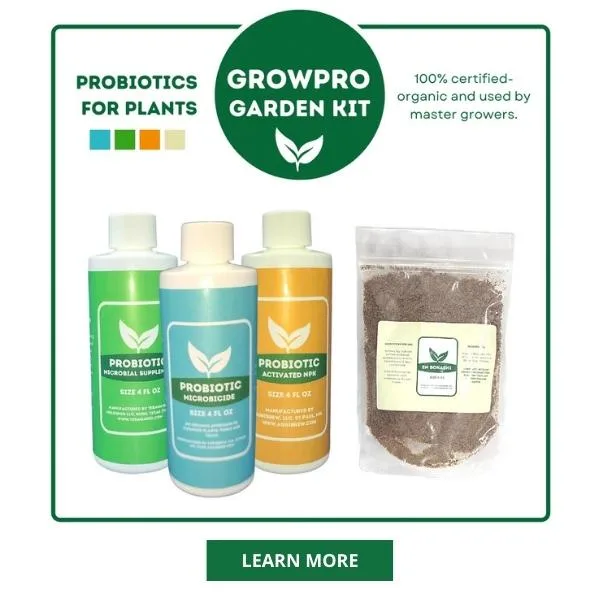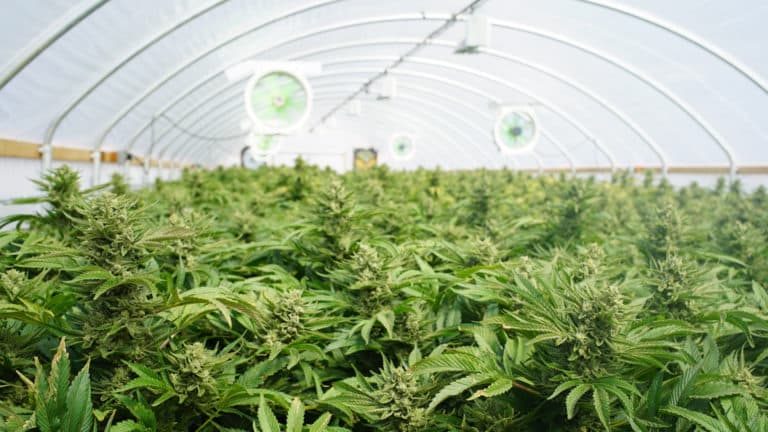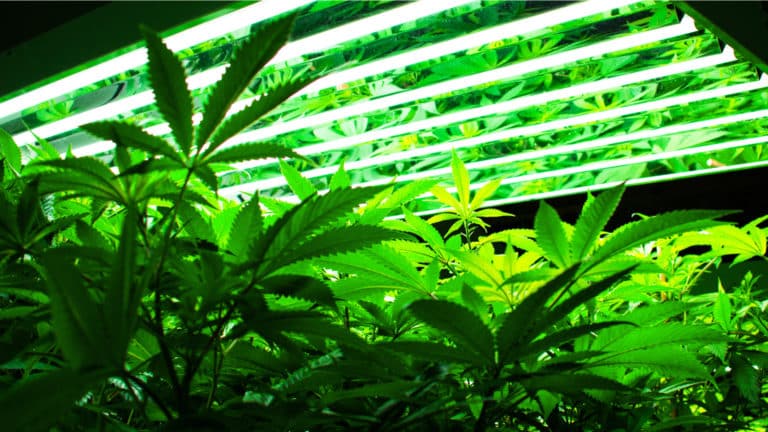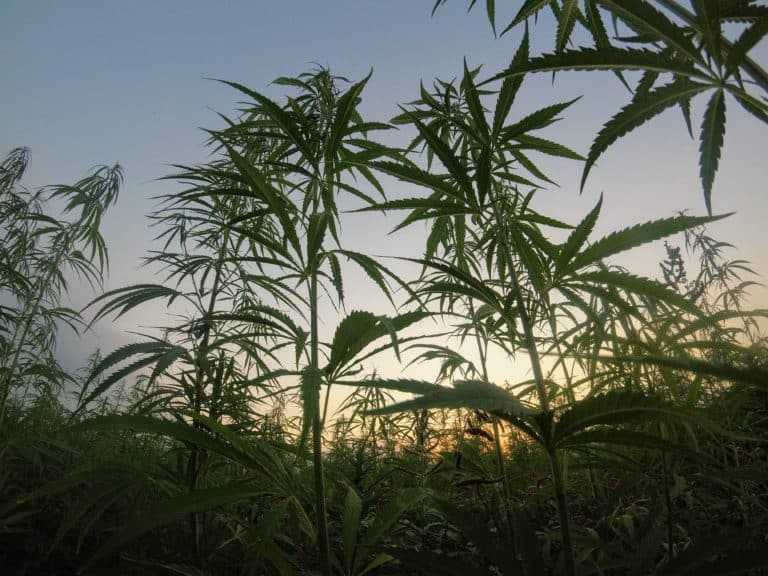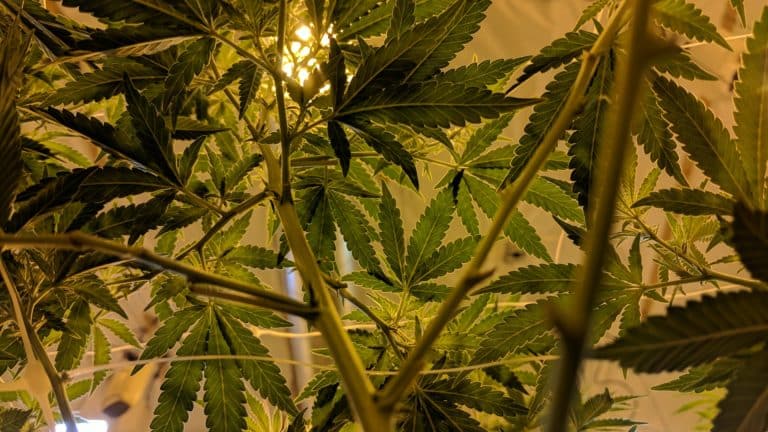I get a lot of e-mails from readers asking what is involved with starting an indoor marijuana garden. With so many more people deciding to grow their own marijuana for medical and/or recreational purposes, I expect to get more and more of these types of inquires as time goes by. This article is an attempt to be efficient so I can zap over the link to people making the inquiries. I expect to revise and refine this article as time goes by.
This article is meant to be a good start, but shouldn’t be seen as an exhaustive, all inclusive master list of everything that you will need. There are many different methods and equipment involved in growing marijuana, and there isn’t necessarily one ‘right way’ to do it. If you have anything to add, please do so in the comment section so that others can benefit from your knowledge. Starting a marijuana garden is one of the most exciting adventures in life in my opinion, and can be the most rewarding, challenging thing you will ever endure.
One of the first things that you will have to determine when starting an indoor marijuana garden is whether or not you want to have a soil based marijuana garden or a hydroponic system. I have grown marijuana using a hydroponic system as well as a soil based system, and I personally prefer soil. It is cheaper, and less temperamental. Plus I find that the taste of soil based marijuana is superior to hydroponic systems.
Hydroponic systems were all the rage when I first started growing marijuana in the 1990’s, but more and more of my friends are leaning towards soil based systems. However, I will point out that hydro systems have yielded more, and yielded faster based on my experience, which is a significant point for sure. Aeroponic systems are starting to become more common, but if you are reading this article, that is probably over your head at this point. Baby steps young grasshopper! Some of the stuff below will be specifically for one or the other, while a lot of what you will need will be standard for both, such as lighting.
If you are new to marijuana growing, or don’t have any background in carpentry, or have the money to spring for it, I highly encourage considering a grow tent kit (like these). They come with everything that you need to get started. This isn’t for everyone but if you can do it, it will help give you a head start for sure. For those that wish to build their own garden, below are some things you will need to consider:
Exhaust Fans
Air temperature, quality, and circulation are very important for any grow room, soil or hydro. You will need exhaust fans (like these) to pull fresh air in and push warm air out of the room. You will obviously need ducting to go along with the exhaust fans. This will reduce the temperature of the air in your room, as well as give much needed fresh air and circulation to your plants.
Lighting
Every indoor garden needs lighting (like these) of course. How many lights you will need depends on how many plants you have and how large your garden is. And I suppose how much money you have is another factor too, because lights aren’t cheap! I know a lot of people that cram as many plants under one light as possible, but take it from me, it’s better to have less plants under a light as possible so that they can get as big as they want to and not compete for space with other plants around them. I recommend getting lights that have hoods and ballasts that can switch between high pressure sodium and metal halide bulbs very easily. It will save you the pain of having to take down and install your lighting system when you switch over from the veg stage to the flower stage. A full lighting system will require a ballast, hood, and bulb. Lighting is one of the most important aspects of any indoor garden, so if you can afford it, don’t skimp! I highly recommend using some type of surge protector as a precaution. I had a friend get an electric surge in his house during a storm and it almost burned his house down.
Air Conditioning/Temperature Control
In a perfect world, you would have some type of central air system that kept the temperature of your grow room consistent no matter what. Generally, all of my friends try to keep the temperature of their rooms around 72 degrees to 76 degrees. If the temperature is too high it obviously kills the plants. If it’s too low it can cause disease such as powdery mildew. If you don’t have a central air system installed, the size of A/C you will need depends on what size of room you have. There are many factors that go into creating the temperature of your room (heat from light, amount of air circulation, the temperature of the air that you are pulling in form outside, what time of year it is, the amount of insulation your room has around it, etc) so it’s tough to say what size you will need, or how many you will need. This is something that you will calculate over time. Just make sure to check the temperature often, and add air conditioning units and other devices as necessary. Just know that you will absolutely need one, as grow rooms can get very hot. LED lights are a good choice if you want cost effective lighting that also doesn’t create as much heat. Check out the company below if you want to incorporate LED grow lights into your garden setup:
Hardware
The type and amount of hardware you will need will largely depending on the room you are working with. Some rooms are as easy as installing some hooks and hanging wire and that’s it. Other rooms require building separation walls and all kinds of stuff. I always tell people that it doesn’t necessarily need to look pretty. The room just needs to serve it’s purpose of holding the good stuff and lighting in and keeping pests and other things out. I have had a lot of friends with rooms that have all the bells and whistles possible because they are general contractors, yet my bootleg building skills that created a room that was an eyesore produced more yield than theirs and cost a heck of a lot less!
Mylar/Reflection
You want to get the most out of your grow lights, and make that room light up like a space ship as much as possible. This can be done in many ways, the easiest of which is using mylar. People will use tin foil, which is definitely cheaper, but tin foil rips and folds very easily, which can cause more headaches than it is worth. Putting mylar on the walls will save you time and energy in the long run, trust me. I recommend using mylar that has a black layer of plastic on the back so it blocks light.
Odor Control
I always attacked odor with a two pronged attack. I used charcoal carbon filters (like these) to run the exhaust fans through, and had an ionizer on hand in case of emergencies. If you harness charcoal exhaust filters correctly, you can be standing right outside of the grow room and not smell a thing. However, as your charcoal filters lose their effectiveness over time, having an ionizer on hand is a good way to kill smell very fast in the event that you should need to. You can use whatever you like to kill the smell, but I have found these two methods the easiest and most reliable by far.
CO2 Emitters
Integrating CO2 emitting devices is not something that beginning grow room operators generally use. It’s definitely worth it in the end, but I always tell people to get everything else dialed in first, then look into CO2. It’s been my experience with dozens of friend’s gardens that they don’t do something else right, or goof up their crop somehow, and then it’s very hard if not impossible to determine how much CO2 has helped their gardens. At that point it’s just kind of a waste of money. However, once you get consistent yields, then add in CO2 and you will no doubt be able to easily track how much CO2 has increased your yield, and how much superior the buds are. Once you get to that point, you will probably be choosing between a propane based CO2 creator or using a tank with a CO2 regulator. The propane method is definitely cheaper, but realize it puts off a lot of heat. Tank methods don’t put off heat, but obtaining the CO2 tanks can be a bit of a hassle.
Sensors/Controls
One of the first gardens I ever saw was when I was a sophomore in high school. My friend’s mom grew hydroponically, and her room was dialed in like few I have seen since. It was a two light garden, so admittedly it wasn’t as hard to regulate, but she had a control system that sensed when the room needed to be cooler or warmer, needed CO2, and controlled when the lights turned off and on. These are all things that can obviously be done manually, or can be done by piecing together devices that serve the same purpose. But I’ll be the first to say that if you can afford to, buy a control system like the one described. Your life will be much easier, you won’t have to learn the hard way that you can’t ever forget to turn something on or off at the wrong time, and your garden will be better off for it.
Buckets
Now that a lot of the major parts of the set up have been discussed it’s time to discuss what you will actually be putting your plants into. I’ll talk about buckets for soil plants right now, and move to hydro later. You can use just about anything to put your plants into as long as the bottom allows water drainage. Just remember that the larger the root base, the larger the plant, and then the larger the harvest. I recommend using buckets (like these) that are specifically designed for growing, as they are easier to handle at the very least, and some people will swear that the dimensions of the bucket help the plant grow better. I would always use the largest buckets I could find. I had two 25 gallon buckets and a bunch of 15 gallon buckets and the 25 gallon bucket plants were consistently superior to the plants in the smaller buckets. Of course, that took up a lot more space than 5 gallon buckets which most of my friends use, but it was worth it. Use whatever size you have to as space allows. My buddy uses an ebb and flow method that utilizes fabric bags, and with great success, but I’d recommend beginner gardeners move on to that after they have perfected a simpler bucket method.
Soil
I don’t know of a reliable, discreet way to get soil on the web. I encourage people to obtain high quality organic soil in their area from either a garden supply store if you have them in your area, or from a gardening section of a home improvement store. If you want to go the extra mile (highly recommended) and create the best soil I have ever used, check out the article here. I recommend getting a moister meter for the soil.
Hydro Kits
As I stated before, growing hydroponically is more temperamental than growing with soil, but the rewards can be larger and faster from what I have seen. However, most people I know that achieve those results get them after years of trials and tribulations because building a system from scratch that is dialed in is not an easy task. Veterans will probably scoff at that claim, but then again, they are veterans. I have seen countless gardeners start with a hydro system they built from scratch, just to flood their rooms, get root rot for various reasons, and experience many other headaches just to get a low yield. One easy way around this is to buy a hydro kit (like these). I finally bit the bullet after a couple of failed hydro attempts and got a kit and it was way easier. Then after a couple of years working with a dialed in system, I was able to gain the knowledge to build systems from scratch. I recommend this to beginner gardeners. It might cost a little more, but it will be worth it in the end, especially if you flood your room and have to pay to get it cleaned up, which will cost far more in the long run than if you were to just buy a kit initially.
Hydroponic Grow Mediums
There are many grow mediums that you can use for hydroponics. I have found that using rockwool and hydroton are the best. The rockwool has to be conditioned, so keep that in mind. You want it to have the right PH level. As I said, there are many mediums out there, but I have always found those two to work the best and easiest.
Pest/Disease Control
One area of gardening that is a never ending battle is pest and disease control. The three plagues as I always refer to them are spider mites, powdery mildew, and heat. Heat of course can be mitigated by things I already mentioned. But bugs and disease are another matter. I recommend always having an organic soap around and various other pest deterrents such as sticky pads. I recommend fish oil sprays for powdery mildew. If you have those things around, you are prepared for a lot of things. However, you will no doubt experience bugs that are too resilient for soaps or sprays, or diseases other than powdery mildew. Just remember to stay ahead of things by keeping your garden as clean and tidy as possible at all times. Putting in a little effort ahead of time will save you a ton of effort after it’s too late. Try to integrate lady bugs into your garden if they are available in your area. Most garden stores have them. They are a cheap, natural way to keep away pests!
Nutrients
There are so many nutrients on the market it will make your head spin. The two most common lines of nutrients that I see people use with success are General Hydroponics and Advanced Nutrients. I would start with these and alter your personal recipe as time goes by. At the end of the day, use whatever works, but if you are clueless, those two lines are a good place to start. Make sure to buy a PH tester, as you want to check the PH levels of your water/nutrients constantly. Be leery of nutrients that make outlandish claims of monster yields, unless you know someone that has personally used it and you trust their results.
Plus: Learn how EM-1 can help enhance your yields within weeks.
***
There are so many things that go along with growing that it’s impossible to list them all in one article. There are fantastic things being invented everyday that make old things obsolete, and I don’t see that stopping as marijuana reform continues to spread across the country. Over time you will accumulate lots of bells and whistles that will add to the sophistication of your garden. The things listed above are a great start. As I said before, if you have anything to add, please do so in the comments so that others can benefit from your knowledge! Are you overwhelmed by everything that goes into a quality garden? I can’t blame you, it’s not as easy as some people think.
The absolute easiest way to start a garden when you don’t know a lot about it is to buy a grow cabinet (like these) or grow tent kits that do much of the work for you, and increases the chances of success significantly. I highly encourage rookie growers to consider that route if you can afford it. It will save a lot of headache, will give you a much needed head start in the process, and they take up a lot less space. You can control the environment much easier, and get that final product you are after!
If I was rolling in dough, I would use nothing but grow tents and cabinets around my house so it was an easy process to set up and tear down. The first time I saw a grow tent was in the basement of a prominent Oregon marijuana activist’s house. He had four of them, and swore by them. He moved a lot, as did I, and he was the first to say that they are a lifesaver as far as setting up and tearing down.


